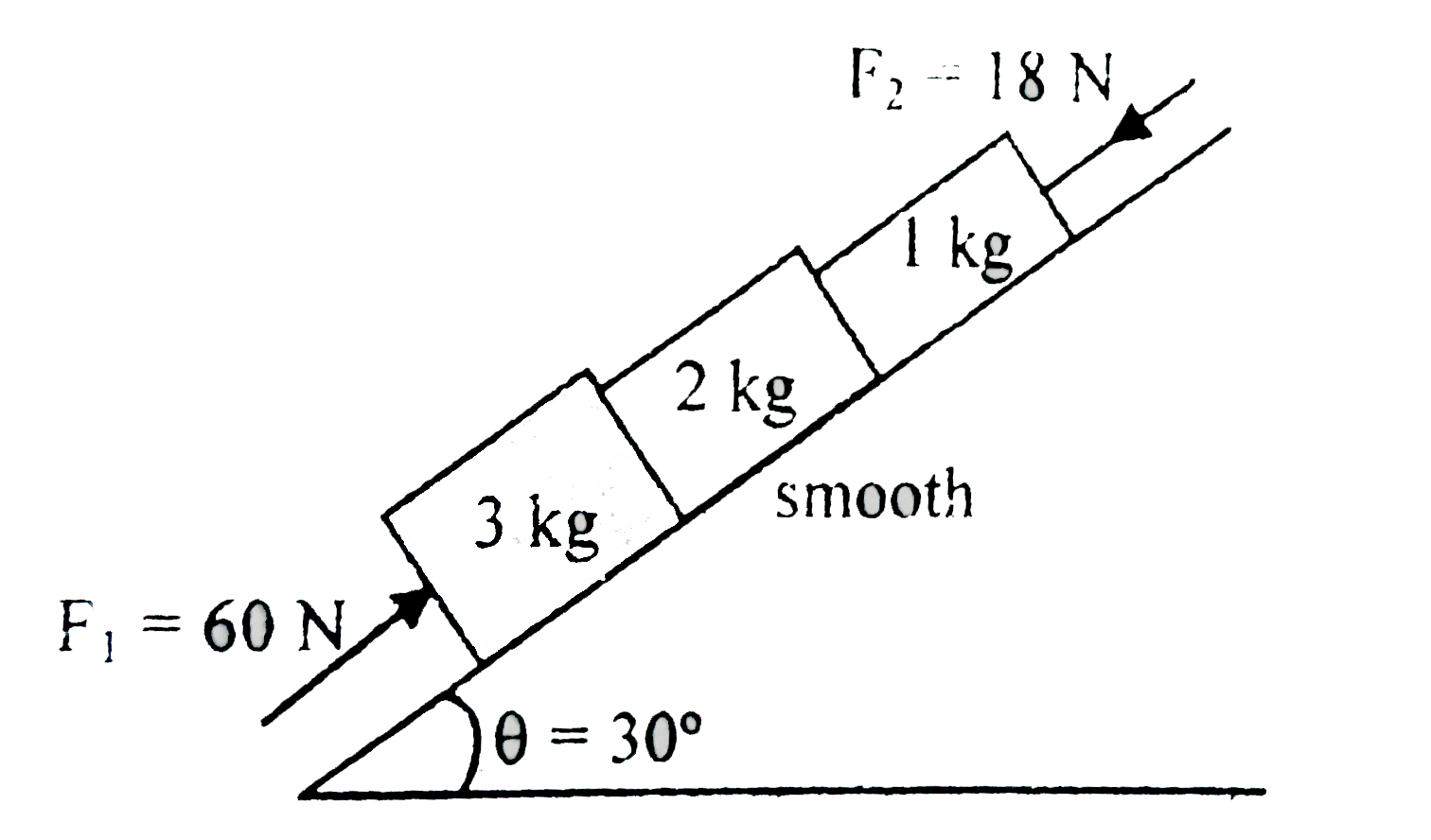Column IColumn II(A)Moment of inertia(p)newton/metre2(B)Surface tension(q)kg/(metre-sec)(C)Angular acceleration(r)kg-metre2(D)Coefficient of viscosity(s)newton/metre(E)Modulus of elasticity(t)radian/sec2
The correct Answer is:(A)-r, (B)-s, (C)-t, (D)-q, (E)-p
To solve the problem of matching the items in Column I with their corresponding units in Column II, we will analyze each item step by step.
1. Moment of Inertia (A):
- The moment of inertia is a measure of an object's resistance to changes in its rotation and is represented by the unit kg⋅m2.
- Therefore, we match A with (r) kg-metre².
2. Surface Tension (B):
- Surface tension is defined as the force per unit length acting at the surface of a liquid. Its unit is N/m (newton per meter).
- Thus, we match B with (s) newton/meter.
3. Angular Acceleration (C):
- Angular acceleration is the rate of change of angular velocity and is measured in rad/s2 (radians per second squared).
- Hence, we match C with (t) radian/sec².
4. Coefficient of Viscosity (D):
- The coefficient of viscosity describes a fluid's resistance to flow and is expressed in units of kg/(m⋅s) (kilogram per meter per second).
- Therefore, we match D with (q) kg/(metre-sec).
5. Modulus of Elasticity (E):
- The modulus of elasticity measures a material's ability to deform elastically (i.e., non-permanently) when a force is applied. Its unit is N/m² (newton per square meter).
- Thus, we match E with (p) newton/m².
Final Matches:
- A → (r) kg-metre²
- B → (s) newton/meter
- C → (t) radian/sec²
- D → (q) kg/(metre-sec)
- E → (p) newton/m²
- The moment of inertia is a measure of an object's resistance to changes in its rotation and is represented by the unit kg⋅m2.
- Therefore, we match A with (r) kg-metre².
- Surface tension is defined as the force per unit length acting at the surface of a liquid. Its unit is N/m (newton per meter).
- Thus, we match B with (s) newton/meter.
- Angular acceleration is the rate of change of angular velocity and is measured in rad/s2 (radians per second squared).
- Hence, we match C with (t) radian/sec².
- The coefficient of viscosity describes a fluid's resistance to flow and is expressed in units of kg/(m⋅s) (kilogram per meter per second).
- Therefore, we match D with (q) kg/(metre-sec).
- The modulus of elasticity measures a material's ability to deform elastically (i.e., non-permanently) when a force is applied. Its unit is N/m² (newton per square meter).
- Thus, we match E with (p) newton/m².
- A → (r) kg-metre²
- B → (s) newton/meter
- C → (t) radian/sec²
- D → (q) kg/(metre-sec)
- E → (p) newton/m²
Topper's Solved these Questions
- BOOK - ALLENCHAPTER - MISCELLANEOUSEXERCISE - ASSERTION-REASON18videos
MISCELLANEOUS
- BOOK - ALLENCHAPTER - MISCELLANEOUSEXERCISE - Comprehension 15videos
MISCELLANEOUS
- BOOK - ALLENCHAPTER - MISCELLANEOUSEXERCISE - Exercise-0187videos
MISCELLANEOUS
- BOOK - ALLENCHAPTER - KINEMATICS (MOTION ALONG A STRAIGHT LINE AND MOTION IN A PLANE)EXERCISE - BEGINNER S BOX-78videos
KINEMATICS (MOTION ALONG A STRAIGHT LINE AND MOTION IN A PLANE)
- BOOK - ALLENCHAPTER - PHYSICAL WORLD, UNITS AND DIMENSIONS & ERRORS IN MEASUREMENT EXERCISE - EXERCISE-IV8videos
PHYSICAL WORLD, UNITS AND DIMENSIONS & ERRORS IN MEASUREMENT
Similar Questions
Column IColumn II(A)Stress(p)Pressure(B)Strain(q)Energy density(C)Modulus of elasticity(r)Angle(D)Torque(s)Energy
View SolutionColumn IColumn II(A)Work(p)[A1/2T−1](B)Moment of inertia(q)[FA1/2](C)Velocity(r)[FA1/2T2]
View SolutionColumn IColumn II(A)R/L(p)Time(B)C/R(q)Frequency(C)E/B(r)Speed(D)√ε0μ0(s)None
View SolutionMatch the following.
∣∣ ∣ ∣ ∣ ∣ ∣ ∣ ∣∣Table-1Table-2(A)Coefficient of viscosity(P)[M2L−1T−2](B)Surface tension(Q)[ML0T−2](C)Modulus of elasticity(R)[ML−1T−2](D)Energy per unit volume(S)Noneof a fiuid∣∣ ∣ ∣ ∣ ∣ ∣ ∣ ∣∣View SolutionColumn IColumn II(A)Electrical resistance(p)[M−1L−2T4A2](B)Capacitance(q)[ML2T−2A−2](C)Magnetic field(r)[ML2T−3A−2](D)Inductance(s)[MT−2A−1]
View SolutionColumn IColumn II(A)Base unit(p)N(B)Derived unit(q)hp(C)Improper unit(r)kgwt(D)Practical(s)rad(E)Supplementary unit(t)kg
(Note : Here it is given that you have to match one to one only)View SolutionMatch the following
Column-IColumn-II(A)Enthalpy(p)Extensive property(B)Entropy(q)H - TS(C)Free energy(r)E + PV(D)Pressure(s)Intensive propertyView SolutionMatch the following columns.
∣∣ ∣ ∣ ∣ ∣ ∣ ∣ ∣∣Column IColumn II(A)d v/dt(p)Acceleration(B)d|v|/dt(q)Magnitude of acceleration(C)drdt(r)Velocity(D)∣∣drdt∣∣(s)Magnitude of velocity(t)Rate of change of speed∣∣ ∣ ∣ ∣ ∣ ∣ ∣ ∣∣View SolutionMatch the Column-I with Column-II :
Column-IColumn-II(a)Mole fraction(p)mol kg−1(b)Molality(q)Depends on temperature(c)Molarity(r)Unitless(d)Normality(s)Independent of temperatureView SolutionIn the diagram shown in figure, match the following (g=10m/s2)

Column-IColoumn-II(A)Acceleration of 2kg block(P)8 Si unit(B)Net force on 3kg block(Q)25 SI unit(C)Normal reaction between 2 kg and 1kg(R)2 SI unit(D)Normal reaction between 3 kg and 2kg (S) 45 SI unit(T) NoneView Solution

